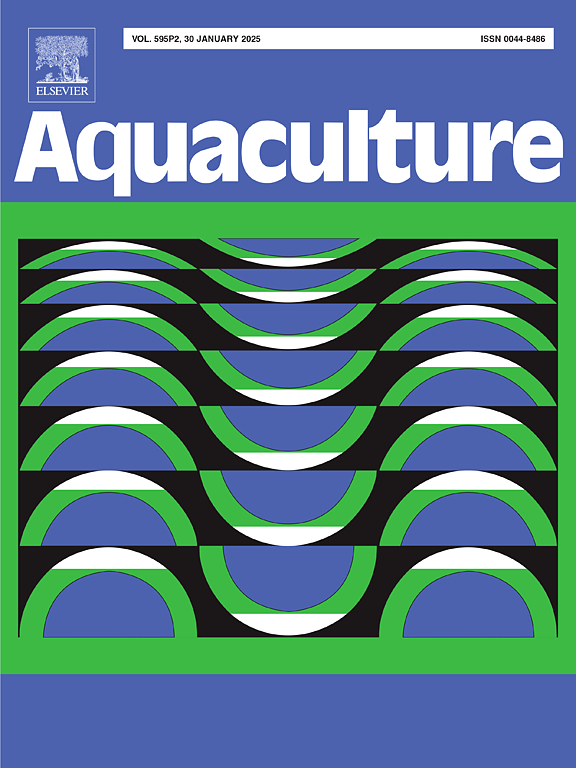Responses of family and individual selection on growth of snakeskin gourami (Trichopodus pectoralis) across two generations
IF 3.9
1区 农林科学
Q1 FISHERIES
引用次数: 0
Abstract
Selecting an appropriate selection method is a fundamental strategy for genetic improvement, enabling breeders to enhance desirable traits, optimize productivity, and ensure the long-term sustainability of breeding programs. This study evaluated selection responses for body weight (BW) in snakeskin gourami (Trichopodus pectoralis) following family and individual selection based on estimated breeding values (EBVs). The base population was formed by crossing three farmed stocks, introducing heterozygosity and structural variation that influenced early generation outcomes. Although methods were applied in different generations, family selection was applied to the G0 generation, resulting in a negative realized response (−0.155 g), while individual selection was applied to the G1 generation, resulting in a positive realized response (0.929 g). Low heritability estimates (0.025–0.175) and moderate to high common environmental effects (0.059–0.219) were observed. Although direct comparisons between selection methods must be made cautiously due to the population restructuring, individual selection demonstrated the potential for meaningful genetic gain. The cumulative selection response over two generations was 0.774 g, corresponding to an improvement of 35.67 % per generation. These findings highlight the importance of considering population structure in breeding evaluations and support the value of individual selection strategies to improve growth traits in aquaculture species under complex population conditions.
家系和个体选择对两代胸鳞蛇蛄生长的响应
选择合适的选择方法是遗传改良的基本策略,使育种者能够提高理想的性状,优化生产力,并确保育种计划的长期可持续性。本研究评估了基于估计育种值(EBVs)的蛇皮gourami (Trichopodus pectoralis)家族和个体选择对体重(BW)的选择反应。基础群体是由三个养殖种群杂交形成的,引入了影响早期后代结果的杂合性和结构变异。虽然不同世代采用不同的方法,但对G0代采用家族选择,实现响应为负(- 0.155 g),而对G1代采用个体选择,实现响应为正(0.929 g)。遗传力较低(0.025-0.175),常见环境效应中等至较高(0.059-0.219)。尽管由于种群结构调整,选择方法之间的直接比较必须谨慎进行,但个体选择显示了有意义的遗传增益的潜力。两代累积选择响应为0.774 g,每代提高35.67%。这些发现强调了在育种评价中考虑种群结构的重要性,并支持了在复杂种群条件下个体选择策略对改善水产养殖物种生长性状的价值。
本文章由计算机程序翻译,如有差异,请以英文原文为准。
求助全文
约1分钟内获得全文
求助全文
来源期刊

Aquaculture
农林科学-海洋与淡水生物学
CiteScore
8.60
自引率
17.80%
发文量
1246
审稿时长
56 days
期刊介绍:
Aquaculture is an international journal for the exploration, improvement and management of all freshwater and marine food resources. It publishes novel and innovative research of world-wide interest on farming of aquatic organisms, which includes finfish, mollusks, crustaceans and aquatic plants for human consumption. Research on ornamentals is not a focus of the Journal. Aquaculture only publishes papers with a clear relevance to improving aquaculture practices or a potential application.
 求助内容:
求助内容: 应助结果提醒方式:
应助结果提醒方式:


